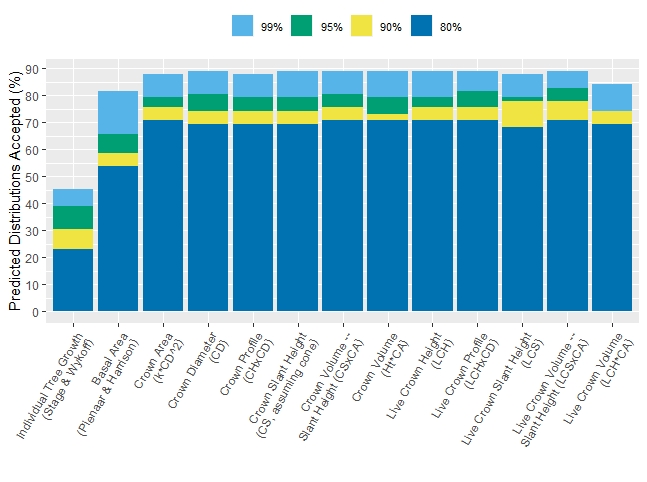May 8, 2020
https://www.linkedin.com/posts/activity-6664514494074535937-mbDe

Back in the day when I was a scientist (1996), traditional individual-tree growth and relative basal area projection systems were compared to several relative crown size projection (RCP) systems for young Douglas-fir plantations. In addition to a relative crown size projection function, each RCP system also included prediction and projection functions for total height and dbh using the various expressions of crown size. Observed and predicted dbh distributions were compared by using two-sample Kolmogorov-Smirnov tests (see graph). Using the 95% confidence level, RCP systems methods provided better representation of observed dbh distributions in 15-40% of the stands than the traditional growth methods. Representation of diameter distributions obtained by using crown diameter alone (80.5% accepted) was improved in only 1.2% of the stands when using live crown profile and 2.4% of the stands when using live crown volume with slant height. When used to compute crown volume, live crown height was detrimental (4.5% fewer accepted) compared to using total height. RCP systems could be useful for forest planning and updating data obtained by either ground-based or remote-sensing forest inventory methods.